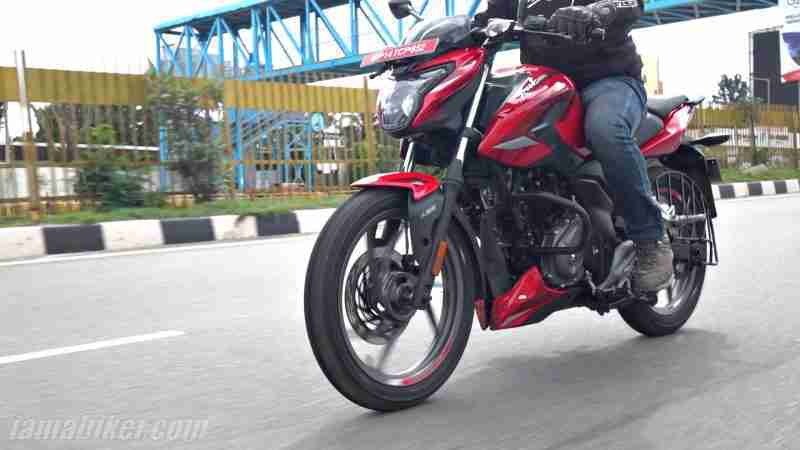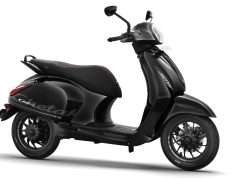Bajaj recently released a new version of the Pulsar 150 motorcycle called the Pulsar P150. Compared to the 150 it replaces, it is a complete departure with a new platform, engine, and design that draws on the NS, or “N,” styling of the Pulsar N250 and N160 models. The bike has a modern, slim appearance and includes high-end features such as projector LED headlamps, adjustable rear monoshock, gear position indicator, range indicator, and digital “Infinity” instrument cluster.
There are 2 variants and the top variant comes with dual disc brakes and split seats, while the base variant has a drum brake and a single seat. The Pulsar P150’s frame is lighter and more rigid than previous models and the engine is based on the N160’s engine. The new 150cc engine produces 14.5 horsepower and 13.5 Nm of torque, and has a smooth performance with little noise, vibration, or harshness. The Pulsar P150 is also lighter than its predecessor, making it more agile and quick.
One of the standout features of the new Pulsar P150 is the range of high-end features included in the bike, despite its low cost. The projector LED headlamps and LED tail-lamps add a premium touch, as does the adjustable rear monoshock, gear position indicator, range indicator, and digital “Infinity” instrument cluster. It’s worth noting that the Pulsar P150 does not come with Dual Channel ABS and instead a Single Channel System even in the top variant.


The new frame of the Pulsar 150 is designed to be both lightweight and rigid, and uses the engine as a stressed member to better centralize the mass. The engine itself has been reworked and is largely based on the N160’s engine, although it has no internals from the older engine. Despite this, the bore and stroke remain the same. The new 150cc air-cooled two-valve single engine produces 14.5 horsepower and 13.5 Nm of torque, which is slightly more than previous models. The engine also has a kick starter, which is a popular feature among buyers in this segment.
The performance of the new Pulsar 150 is a noticeable improvement over previous models thanks to the newer generation internals and lighter weight. The engine is smooth from the moment it is started, and the cold start on a cold day was surprisingly smooth. The engine settles into a nearly silent idle and has little to no noise, vibration, or harshness (NVH) at speeds under 90 kmph. Even at higher speeds, there is very little NVH to report. The lighter weight of the Pulsar P150, which is about 10kg lighter than its predecessor, also contributes to its improved performance. The bike accelerates quickly and maintains a brisk pace throughout the powerband, making it an engaging ride when pushed. The suspension of the Pulsar P150 is also improved, with a hydraulic telescopic fork up front and a hydraulic monoshock at the rear. The suspension is well-tuned and provides a smooth ride, even on rough roads, instead of going like it’s competitors, Bajaj has chosen to tune more for comfort rather than the stiffness a sporty ride requires.
Overall, the new Pulsar P150 is a significant upgrade over previous models, with a sleek design, high-end features, and improved performance. The bike offers a smooth and refined ride, with little NVH, and is well-suited to a young target. Although our stint with the new Pulsar P150 was short, we surely think this one has the potential to be the new sporty commute king, especially when you consider that it’s expected mileage is close to 50 kmpl.








































my name is Harun
My have palser as 150
It is very bed
Becoouse
It is englis no good